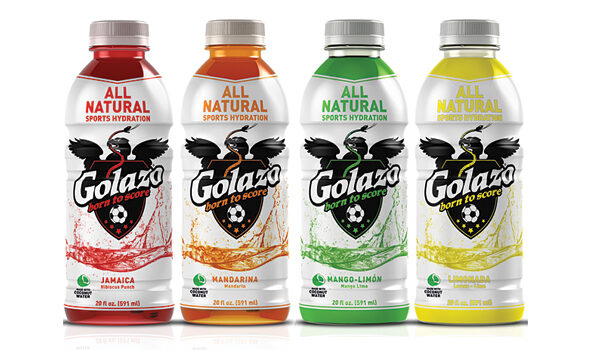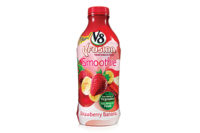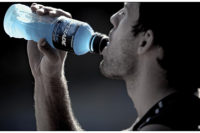Similar to how superheroes like Spiderman and Batman have been known to blur the boundaries between advocates for justice and vigilantes, sports and protein drinks are transitioning from being separate categories to the emergence of one overall sports performance market, experts say.
Formulations designed to appeal based on consumer need-states have led this evolution, explains Richard Haffner, global head of beverages research for Chicago-based market research firm Euromonitor International. One division is products that appeal to serious athletes versus casual ones, he says. In addition, sports and protein drink manufacturers are releasing products formulated around exercise occasions, he notes.
“It’s not just replenishing while you’re exercising, but it’s also about getting you prepared to exercise; you do better, as well as you recover afterwards, so you start to see a little blending between the protein and the sports drinks,” Haffner says.
Growing performance
Continuing last year’s path for growth, non-aseptic sports drink sales grew 7.5 percent to more than $4 billion for the 52 weeks ending Feb. 19 in supermarkets, drug stores, gas and convenience stores and mass merchandise retailers, excluding Walmart, club and liquor stores, according to market research firm SymphonyIRI Group, Chicago.
Purchase, N.Y.-based PepsiCo’s Gatorade brand outpaced the category with 8.2 percent growth for $3.1 billion in sales and maintains a 76.6 percent market share, based on SymphonyIRI data. Among its individual brands that experienced growth, Gatorade Perform grew 11.8 percent, G2 Perform rose 20.2 percent and Gatorade Recover increased nearly 2 percent.
“What we are seeing in sports drinks is that Gatorade, which commands the lion's share in the market, has rebranded the whole brand and categorized its products as G Series products with these three series in G, G Fit and G Pro,” says Garima Goel Lal, senior analyst at Mintel, Chicago. “Basically, what they are doing is they are targeting consumers in niche categories, whether serious athletes or casual athletes, but again they are going beyond athletes.”
Leveraging its heritage, Euromonitor’s Haffner says that Gatorade’s expansion beyond its Gatorade G Series to Gatorade Pro and Gatorade Fit with less sugar has broadened the brand's consumer appeal.
The category’s second leading brand, Powerade, also continued to show growth. With 6 percent sales increases, The Coca-Cola Co.’s sports drink brand experienced sales of more than $912.8 million and captured 22.6 percent of the market in measured channels for the 52 weeks ending Feb. 19, according to SymphonyIRI.
The Powerade products that saw growth during that time period were Powerade Ion4 at 4.3 percent and Powerade at nearly 3 percent. Powerade Zero was relatively flat and Powerade Zero Ion4 accounted for more than $28 million in sales during the same time period in measured channels, according to SymphonyIRI data.
“[Powerade’s] new products, like Powerade Play, which is … a product targeted at kids, have done really well,” Mintel’s Goel Lal says. “Even though sales were still small at that point — they were $6 million — they grew 300 percent between 2010 and 2011. Powerade Zero has done well and it sort of falls into this trend of beverages with a ‘zero’ moniker. … Diet products have fared well and consumers continue to look for low-calorie beverages, so in that trend Powerade Zero has done well.”
Euromonitor’s Haffner notes that the development of Powerade Zero was a natural line extension for the brand and the introduction of Powerade Ion4 allowed them to target more performance-oriented users.
“[Powerade is] trying to talk about [formulation] from a different brand perspective and gives Ion4 its unique attributes to reach that more serious athlete,” he says.
The innovations that have taken place with both Powerade and Gatorade have helped the sports drink category achieve its latest growth within the United States, Mintel’s Goel Lal notes. She also anticipates continued growth for the category in the lower teens.
"The whole health of sports drinks looks good because of all of these innovations ... the new products from Gatorade will continue to bring growth," she says.
Because the United States is a more established market, Euromonitor’s Haffner anticipates slower growth for sports drinks domestically, but sees interesting international developments for the category.
“I think sports drinks are going to grow faster in some other parts of the world, so it remains an exciting category on a global basis,” he says.
Packed with protein
Part of Gatorade’s rebranding in 2010 included the development of ready-to-drink (RTD) Gatorade Recover, which contains protein for muscle replenishment and is the third step in the G Series and G Series Pro lineups. Gatorade Recover’s sales accounted for more than $29 million for the 52 weeks ending Feb. 19 in measured channels, according to SymphonyIRI.
RTD forms have a built-in market compared to the bulk protein powders that are typically associated with the protein drinks market, says Chris Schmidt, consumer health industry analyst with Euromonitor.
“In terms of sports nutrition, the consumer base tends to be split between less sophisticated, casual users and more serious fitness/bodybuilding enthusiasts,” Schmidt says. “The convenience factor of a protein RTD appeals much more to the casual user, who, using the products less frequently, is less averse to their relatively high unit prices.”
Schmidt adds that RTD drinks account for a fraction of sales compared to bulk protein powder, and although the ingredient is gaining in popularity, future sales growth will be tied to mass channel distribution.
“I think the key for sports protein drinks will be continued investment in the casual consumer and mass channels,” he says. “[Cytosport’s] Muscle Milk is obviously the marquee example, and they have done a great job of positioning the product as a supplement for the ‘everyday athlete’ [and] really turning their product into a lifestyle accessory for the ‘hip to be fit’ crowd and trying to appeal to women with Muscle Milk Light.”
Slated for release this summer, Benicia, Calif.-based Cytosport’s Muscle Milk is launching limited-edition patriotic packaging for its Chocolate flavor in time for the Fourth of July and the 2012 Summer Olympics. The product will be branded as “Made in the USA” and available in a 14-ounce RTD bottle, an 11-ounce Tetra Pak four-pack and 2.47-pound powder tub.
For companies such as Cytosport, Schmidt sees the next step to capture the health and wellness demographic with all-natural or organic RTD products. He adds that Muscle Milk and other top brands already produce natural bulk protein powders.
Adding a natural variety to the protein drinks market, Chicago-based Fair Oaks Farms Brands offers its Core Power brand, which contains 26 grams of protein in each 11.5-ounce bottle in its Chocolate, Vanilla and Honey varieties, and 20 grams in its Chocolate Light and Strawberry Banana Light offerings. Appealing to the natural beverage consumer, Core Power is made from hormone-free milk, honey and offers an all-natural ingredient list, the company says.
In addition to adding three new flavors — Orange, Berry and Grape — WheyUP, a brand of Shadow Beverages and Snacks, Tempe, Ariz., reformulated its beverages last year to feature natural flavors and colors as well as B vitamins. The 16-ounce beverage still contains 20 grams of protein in each bottle, according to the company.
Established in the traditional protein drink market since 1985, Optimum Nutrition’s ABB, a wholly owned subsidiary of Glanbia plc, Kilkenny, Ireland, offers a wide range of protein beverages and products and continues to stay on top of the trends in the marketplace, says Tim Weigard, communications coordinator for ABB and Optimum Nutrition.
“We are always researching trends and things like that and we have continuously reformulated even our ready-to-drink performance beverages to improve flavor profiles, to improve the micronutrient profiles, whatever we can do and whatever technology allows as science becomes more advanced,” Weigard explains.
ABB’s RTD protein products include its Pure Pro, which contains 35 grams of protein, as well as its Pure Pro 50, which has 50 grams of protein in each resealable aluminum bottle. For endurance athletes, ABB offers its Max Recovery beverage, which is a combination of whey protein isolate and stacked carbohydrates for muscle recovery and rebuilding.
Although the protein market originally was adopted by the bodybuilding demographic, ABB’s Weigard says more recreational athletes are embracing the benefits protein formulations can provide.
“We’ve seen a greater understanding of protein as the sports nutrition industry evolves; it used to be that protein was the exclusive domain of bodybuilders, [but] strength athletes picked up on it and football players and rugby players,” he says.
Glanbia plc also added to its portfolio of protein powders and beverages when it acquired Bio-Engineered Supplements and Nutrition (BSN) in January 2011. BSN offers its Syntha 6 product in an RTD format in two versions: one that contains a 40-gram serving of protein, which traditionally is sold in gyms and similar channels, and a 28-gram formulation that was specifically designed for the mass market, says Jeff Howe, general manager of the mass market beverage division for BSN.
“Protein is one of those things that if you’re 70 or 7 you need a certain amount of protein intake into your body to build your muscles or keep muscles that you have,” Howe says. “I think what happened is over the last few years, the world is becoming much more aware of the benefits of protein, but people don’t want to have to eat five eggs or have a big steak or what have you to get protein, so they’re looking for alternatives.”
Although protein beverages have found a home with athletes, non-sports nutrition protein beverages have developed a growing interest for consumers, Euromonitor’s Schmidt says.
“Within the meal replacement market, protein is quickly gaining popularity for its purported satiety benefits,” he says. “However, it doesn’t provide enough nutrients itself to be a true meal replacement product, so protein content tends to be more of a secondary claim.”
The Coca-Cola Co.’s wholly owned subsidiary Odwalla last year introduced Super Protein Mango, a non-dairy mango smoothie that delivers 20 grams of soy protein in a 12-ounce bottle. In addition to protein, the smoothie also provides 50 percent of the daily value of calcium and 150 percent of the daily value of vitamins B12 and B6. It is made with apple juice, mango puree, orange juice and banana puree.
Natural extensions
Health and wellness-inspired formulations are not only being embraced by protein drink manufacturers. PepsiCo’s Gatorade offers its G Series Fit, which is lightly sweetened and contains only 20 calories in each bottle, and Gatorade Natural uses only natural ingredients like sea salt, fruit flavors and natural sweeteners.
However, the category leaders are not the only brands developing products for the natural and organic markets. Mintel’s Goel Lal says because natural products were still fairly new in the marketplace from June 2010 to June 2011, the market research firm wasn’t able to get a sense of how they fared.
“Sales growth in natural is not likely to be as big as it was in enhanced water or tea, which are viewed more like pro-health kinds of beverage segments,” Goel Lal says.
However, some natural sports drink brands are positioning their products as being more than a sports drink. New York City-based CodeBlue developed and markets the same-named dietary supplement as a product that goes beyond hydration by replacing the vital nutrients and fluids the human body loses every day. Usage occasions it highlights for CodeBlue include working out, traveling, late nights and early mornings.
CodeBlue’s four varieties — Strawberry Melon, Meyer Lemon, Blueberry and Peach Mandarin — have zero calories, sugars and caffeine. They also contain all-natural ingredients such as potassium, prickly pear, sea salt, ginkgo biloba extract, glutamine, milk thistle, D-ribose and other vitamins and minerals.
Also reaching out to the natural beverage community, Seattle-based Golazo Inc. offers its same-named sports hydration drink that also targets the Hispanic and soccer communities. Richard Tait, co-founder of the brand, says the company saw three trends converging when it developed its products: a growing soccer community with more than three and half billion fans worldwide; an increasing influence in the Latino community, which has increased to more than 50 million Hispanics in the United States; and a consumer desire for all-natural, non-genetically-modified organism products with a simple ingredient list.
“We put those three things together to craft our target market, which is first and foremost the soccer-passionate community with a strong appeal and influence, and to create products that were all-natural with functionality,” he says.
Golazo is available in Mango Limón, Jamaica Punch, Mandarina and Limonada, which are all Latino-inspired flavors, Tait says. Another focus of Golazo during the development process was controlling the sodium content.
“We know that Americans take in a significant amount of sodium more than they need, so what we did with our beverage is we formulated it so that we got just enough sodium to reach the research requirement for performance but didn’t go overboard with it,” says Emily Edison, a sports nutritionist, registered dietician and board-certified specialist in sports dietetics who worked with Golazo to develop the sports hydration beverage.
Golazo’s ingredients include coconut water for potassium as well as agave syrup, which acts as a carbohydrate source, Edison adds.
Coconut water and other products also have garnered attention in the sports drink market.
“In a competitive context, coconut water has risen as an effective sports drink beverage, and also there’s new research that chocolate milk is actually a better recovery beverage compared to traditional sports drinks,” Mintel’s Goel Lal says. “So we still see those competitive factors that might affect the sports drink market.”
Embracing the natural sports drink market, El Segundo, Calif.-based Zico Beverages LLC recently announced its Team Zico, which is comprised of 70 active individuals including everyday people passionate about fitness and health as well as elite professional athletes. Pro athletes will unite with yogis, tri-athletes, running moms and everyday health superstars who share a passion for training and who use Zico coconut water to help stay naturally powered, the company says.
With brands such as Vita Coco, O.N.E. Coconut Water and Tongo Coconut Water, coconut water could see growing opportunities arise for the beverage as a natural alternative to sports drinks. However, Euromonitor’s Haffner says that although coconut water has a lot of the isotonic properties of a sports drink, he’s not sure how it would perform in the mainstream category.
“I have a feeling that coconut water, which has a lot of the isotonic properties, is going to be more of a niche as a sports drink,” he says. BI










